Editor’s Note: This week we’re at the 235th AAS Meeting in Honolulu, HI. Along with a team of authors from Astrobites, we will be writing updates on selected events at the meeting and posting each day. Follow along here or at astrobites.com. The usual posting schedule for AAS Nova will resume the week of January 20th.
Kavli Foundation Plenary Lecture: Black Holes Snacking on Stars: A Systematic Exploration of Transients in Galaxy Nuclei (by Mike Zevin)
In the kickoff plenary of #AAS235, Suvi Gezari (University of Maryland) got us ready for breakfast by illuminating the stellar snacks of black holes. Just like how the tidal forces of the Moon stretch and squeeze the Earth (giving us, for example, high and low tides on Waikiki beach), black holes exert tidal forces on stellar bystanders. Particularly unlucky stars can be ripped apart entirely by the black hole, leading to a so-called tidal disruption event (TDE). This happens when a star enters the black hole’s tidal disruption radius, which is dependent on the star’s size and the relative mass between the star and black hole. Since the tidal disruption radius of a star is a direct probe of the black hole mass, observations of such events can tell astronomers about the black hole that was responsible, as well as properties of the star that was disrupted itself.
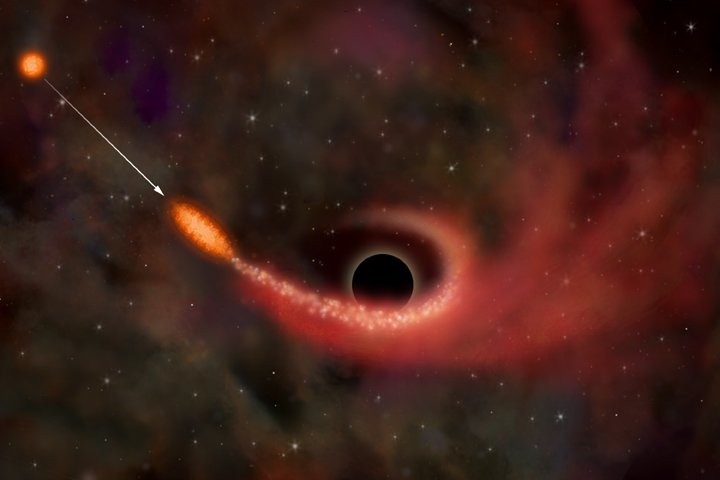
Behemoth black holes, larger than about 100 million solar masses, will swallow stellar interlopers entirely before they can be ripped apart. This is because the tidal disruption radius of the black hole is inside the black hole’s event horizon (i.e., where no light can escape). However, TDEs are an excellent probe for lighter supermassive black holes, as well as the infamous and elusive intermediate-mass black holes. Gezari described how observations of TDEs are excellent probes for lower-mass supermassive black holes, allowing astronomers to better probe the coevolution of black holes and lower-mass galaxies.
Gezari highlighted the wide range of efforts across the electromagnetic spectrum that contribute to the detection and characterization of TDEs, and how the discovery of these transients has been propelled forward by optical wide-field time domain surveys. High cadence surveys such as ASAS-SN and Pan-STARRS can characterize the optical evolution of these rapidly-evolving transients in great detail, and are excellently complemented by observations in higher-energy ultraviolet and X-ray observatories such as Swift. Gerazi discussed some of the recent surprises of TDE science, such as multiple populations of TDEs separated by their emission temperature and spectral characteristics, as well as the lack of TDE observations in young blue galaxies. Gerazi then stressed how current (e.g., ZTF) and future (e.g., LSST) wide-field time domain surveys will produce an avalanche of TDE candidates to help better our understanding of these interesting transient events and the black holes responsible for them, and identifying TDE candidates from the plethora of transients is of utmost importance. She closed her plenary by overviewing a handful of ZTF TDE discoveries, which her team conveniently nicknamed after Game of Thrones characters…make sure to beware of Joffries!

Press Conference: Galaxies & Their Black Holes (by Susanna Kohler)
The first press conference of the meeting opened on large scales, discussing some of the latest things we’ve learned about massive black holes and galaxies.
We know that nearly every large galaxy hosts a central supermassive black hole weighing millions to billions of solar masses. But do dwarf galaxies have equivalently massive tenants? Amy Reines (Montana State University) and collaborators used high-resolution Very Large Array observations to go on a hunt for radio-bright black holes in dwarf galaxies — with great success! The team found a total of 13 massive black holes — they estimate these probably weigh around 400,000 solar masses — in dwarf galaxies in their survey. Intriguingly, not all of them are located in their galaxies’ centers; many are instead wandering around the outskirts of their hosts. Reines and collaborators suggest this is likely due to recent interactions and mergers that kicked these black holes out of the galaxies’ centers. Unlike in large galaxies, where the supermassive black holes are heavy enough to quickly sink back to their galaxies’ centers, these dwarf-galaxy black holes take longer to settle back down. Press release
We’re at the first press conference of #AAS235! Amy Reines just presented the recent discovery of massive black holes in 13 dwarf galaxies — many of which are surprisingly not located at their galaxy’s center. pic.twitter.com/qTQJV6RMIG
— astrobites (@astrobites) January 5, 2020
In keeping with the theme of galaxy interactions and mergers, Ezequiel Treister (Pontificia University Católica de Chile) next presented on new observations of NGC 6240, a merging galaxy system located 400 million light-years away from Earth. Since this system is still in the process of merging, it still has two nuclei, each containing a supermassive black hole. The new observations from the Atacama Large Millimeter/submillimeter Array (ALMA) have revealed a bridge of cold molecular gas that stretches between the two supermassive black holes, fueling them as the galaxies collide. We’re super lucky to have captured this moment, since the bridge of gas is a transient structure that will likely only last around 10 million years — the blink of an eye in galactic timescales! In about 2 billion years, the nuclei will have merged, and the final result will be a massive elliptical galaxy with a single black hole. Press release
Next up, Ezequiel Treister (@ezetre) presented ALMA observations of merging galaxy system NGC 6240. We can see a temporary filament of cold molecular gas connecting the two supermassive black holes as these galaxies collide. #aas235 pic.twitter.com/azTD2FJNrn
— astrobites (@astrobites) January 5, 2020
In 1980, astronomer Vera Rubin measured the rotation of the spiral galaxy UGC 2885, providing evidence for a large amount of dark matter in this galaxy. Now, Benne Holwerda (University of Louisville) and collaborators have used the Hubble space telescope to image this galaxy in high detail (see the cover image at the top of the page), further exploring the structures of this gentle giant. UGC 2885, nicknamed “Rubin’s Galaxy”, is one of the largest known galaxies in the nearby universe, clocking in at 2.5 times wider than the Milky Way and with 10 times the number of stars. Scientists are still working to understand how a galaxy is able to grow to this enormous size. Press release
When was the last time a hydrogen atom did anything interesting on a Saturday night, like going to a party and getting ionized? James Rhoads (NASA Goddard Space Flight Center) points out that, for a typical atom, the last time anything interesting happened was during reionization, a period of time between 150 million and one billion years after the Big Bang. Using the Cosmic DAWN Survey, Rhoads and collaborators discovered EGS77, a group of galaxies from just 680 million years after the Big Bang that contains some of the first stars that formed in the universe. The observations show overlapping bubbles of ionized gas around these early galaxies — signs of the start of reionization, which ultimately cleared the way for light to travel through our universe. Press release
Plenary Lecture: He Lani Ko Luna, A Sky Above: In Losing the Sight of Land You Discover the Stars (by Kate Storey-Fisher)
Father-daughter speakers Kālepa Baybayan and Kala Baybayan Tanaka led us on a seafaring journey in their plenary talk. As navigators with the Polynesian Voyaging Society, Baybayan and Tanaka use the stars for navigation by sea, tapping into indigenous astronomical knowledge and traditions.
Baybayan began by telling the story of humanity spreading across the globe, first by land and later by sea. Around 4,000 years ago, the first seacraft was developed, and the art and science of navigation was born. One seafaring community, the Lapita, spread from Southeast Asia to archipelagos throughout the Pacific, leaving behind a trail of broken pottery that allowed researchers to trace their trajectory.
In the early 1970s, the Polynesian Voyaging Society was established, and they set out to demonstrate indigenous navigation practices. Baybayan was captain of the Hōkūleʻa, a historically accurate Polynesian canoe, which set out from Hawaiʻi in 1976. Using only Polynesian navigation techniques, the voyagers navigated to Tahiti in 33 days. The navigation system relies on astronomy, meteorology, and mathematics — the same foundations as those used today.

Tanaka became hooked on sea navigation as a high schooler after a 24-hour voyage with her father. She learned to use the swells and the stars as guides, and even to recognize the sound of the breathing of dolphins swimming alongside them. In 2013, she participated in the Mālama Honua Worldwide Voyage, in which over 245 voyagers circumnavigated the globe (in many legs) to educate communities on living sustainably. Together they traveled 60,000 nautical miles and visited 150 ports. Tanaka now educates young people on the stellar compass and the history of voyaging.
Bayaban and Tanaka concluded with an emphasis on the science that grounds their work. They use the same star maps as astronomers — just labelled with the stars’ Hawaiʻian names.

Press Conference: TEAM-UP for Physics & Astronomy (by Ellis Avallone)
The second press conference of the meeting took a different turn. Instead of discussing discoveries of astrophysical phenomena, a task force from the American Institute of Physics (AIP) reported on findings in a recent report on “Elevat[ing]African American representation in physics and astronomy.”
How can we foster a sense of belonging for African American students in physics and astronomy? Find out in the new @AIP_TEAMUP report “The Time is Now: Systemic Changes to Increase African Americans with Bachelor’s Degrees in Physics and Astronomy.” https://t.co/jPUVb93Cx5 pic.twitter.com/Fb0BzZIsaG
— American Institute of Physics (@AIP_HQ) January 5, 2020
The CEO of AIP, Michael Moloney, opened by introducing the motivation for compiling this report. He stated that over the past decade the number of physics students graduating with physics bachelor’s degrees had doubled, but the number of African American students had stayed roughly the same. The AIP sought to find out why.
Next, Edmund Bertschinger (Massachusetts Institute of Technology), co-chair of the task force organized to address this disparity, discussed the framework of their study and how it was conducted. The “Task force to Elevate african AMerican representation in Undergraduate Physics & astronomy”, or TEAM-UP, conducted surveys of students and faculty, in-person interviews of African American students, and on-site visits to institutions that did an exceptionally good job of retaining and graduating African American students. TEAM-UP also recruited social scientists to the task force to assist with data interpretation. It’s also important to note that these data were interpreted under the assumption that “African American students have the same motivation and intellect as students in other racial groups.”
Bertschinger also outlined several ways in which this report stands out from previous reports on retaining minoritized students in STEM. To start, this report examines the practices in physics and astronomy in particular, and not just academia as a whole. The report also focuses heavily on the culture of the field, and the ways in which that culture is detrimental to African American students. Finally, this report discusses recommendations for addressing these issues and creating long-lasting change within departments. These recommendations were informed by practices at model institutions with high retention rates of African American students.
Finally, Jedidah C. Isler (Dartmouth College) introduced several of these recommendations. Isler began by thanking the students who were involved in the report, as they were the group who are being most affected. One recommendation seeks to address the fact that African American students tend to doubt themselves in the classroom far more than others. “That is ubiquitous in their experience,” says Isler. “If you can get students to feel confident in [the classroom]they feel like they belong.” The report emphasized the importance of “counterspaces”, places of refuge from academic spaces where students can feel welcomed. Departments need to become aware of these spaces, and actively seek out these spaces for students who need support. Additionally, faculty need to set norms for both the classroom and departments and have a responsibility to mitigate and prevent exclusionary behavior. Press release.
Press Conference: Seminar for Science Writers: Hubble @ 30 (by Briley Lewis)

Launched in April 1990, Hubble is still in good shape despite its age. Jennifer Wiseman (NASA Goddard SFC) gave an overview of Hubble’s impressive history, noting major discoveries such as verifying the existence of dark energy and the first characterization of an exoplanet atmosphere. It has answered new questions and made new observations that weren’t anticipated at its inception, such as detecting radiation from a gravitational wave source. Thanks to multiple servicing missions (the most recent in 2009), the telescope and its instruments have been not only maintained but also upgraded. Wiseman claims that the telescope is at its “peak of scientific return”, with over 1,300,000 observations completed and 15,000 papers published using Hubble data.
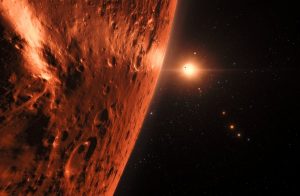
One of the unanticipated uses for Hubble is to study exoplanets; Nikole Lewis (Cornell University) aptly pointed out that “the field of exoplanet science is younger than the HST.” After the Nobel-winning discovery of 51 Pegasi b in 1995, HST observed sodium in the atmosphere of exoplanet HD209458 b, pioneering the technique of transmission spectroscopy. Using its valuable ultraviolet-sensing capabilities, it revealed atmospheric escape on exoplanets, and in recent years HST has been valuable in follow-up of habitable-zone worlds such as TRAPPIST-1 and K2-18b. Going forward, HST will still have a valuable role as our important window into the ultraviolet and visible, complementary to the infrared capabilities of the James Webb Space Telescope.
Looking closer to home, Hubble has also been valuable in our own solar system, serving as critical support for in situ missions. Heidi Hammel (Association of Universities for Research in Astronomy) explains how it gave us global context and dust storm warnings for observations from Mars missions; discovered four moons around Pluto and found New Horizons’ second target, the Kuiper Belt Object MU69; and studied aurorae on giant planets like Jupiter (where the Juno mission is currently orbiting). Recently, Hubble even captured images of the first interstellar comet, 2I/Borisov. According to Hammel, what makes Hubble unique in the solar-system domain is its ability to do multi-decade, multi-wavelength, multiple-object studies, making it complementary to shorter-lived, specific space missions.
Lastly, Garth Ilingworth (UC Santa Cruz) brought us back to the big picture, discussing Hubble’s pioneering deep field images. Starting with the first Hubble Deep Field (HDF) in 1995, the telescope has produced successively more impressive images such as 2009’s Hubble Ultra Deep Field (HUDF09) and 2012’s Extreme Deep Field (XDF). The XDF is the culmination of 23 days of exposure from 800 orbits, 2,963 images taken over a span of 10 years. It detects distant galaxies up to 13 billion years ago, covering 97% of all time.
Images like these are part of what have secured Hubble’s lasting legacy, not only in science but also in popular culture. Ray Villard (STScI) remarked on Hubble’s legendary status, known as a household name and referenced in many forms of popular media, in part thanks to 1,000+ press releases based on the telescope’s data. According to this panel, HST should have a bright future ahead still, with NASA committed to funding it as long as it is “scientifically productive.” Scientists are already preparing for complementary observations to JWST and future missions, and although HST will de-orbit eventually, it seems that day should hopefully be far away.

HAD LeRoy E. Doggett Prize Lecture: From the Invention of Astrophysics to the Space Age: The Transformation of Astronomy 1860-1990 (by Mike Zevin)
For the next plenary lecture, Robert W. Smith (University of Alberta) took us on a trip back through time to examine the evolution of astronomy and astronomers over the past 150 years. According to many prominent mid-19th-century astronomers, astronomy was regarded as the study of the motion of the heavenly bodies. The natural laws that governed the motion of these bodies was already set out; progress in astronomy was reliant solely on making more precise measurements. Because of this, there was not thought to be much room for new discovery. Smith argued that one of the reasons that countries were still pouring money into constructing massive observatories was to display national prowess.
With the advent of the spectrogram, astronomers in the 1860s such as Sir William Huggins began to dissect the light coming from stars and nebulae, giving birth to the field known as astrophysics. However, Smith pointed out that early astrophysicists were not like the astrophysicists that would emerge later. In scientific texts, stars were described as objects designed to fit the special purposes of living beings on worlds going around them, a very theological view. This philosophy had a paradigm shift not because of any astronomical theory, but rather because of the theory of evolution. The story thus shifted from one of natural theology to scientific naturalism — rejecting religious input into scientific research.
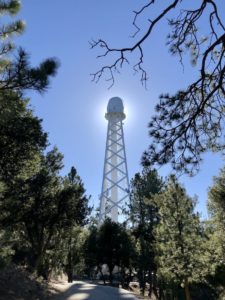
Smith then turned to the 20th century, where astronomy saw an increase of professionalism and less room for amateur astronomers to make a substantial scientific impact. Due to millionaires like Carnegie showing strong interest in astronomy (and funding massive observatories such as Palomar, Terkes, and Mt. Wilson), the US became a leading power in observational astronomy. With the rise of photography, new opportunities were also available for underrepresented communities in the field. Women astronomers, for example, were able to move out of the “domestic sphere” (i.e., could only work as an astronomer if they were married to an astronomer). The standard example of this is the group of Harvard Computers, though a number of other such groups appeared in the early 1900s. In the 1930s, astronomy encountered a great divide: the “one-galaxy universe” view and the “many galaxies all expanding away from another in a vast universe” view, which Smith said challenged what astronomers regarded as the realm of science versus the realm of metaphysical. Smith closed with how, thanks in part to the Cold War, the field astronomy became much more political, which was necessary for projects like the Hubble Space Telescope to come to fruition after its conception in the 1970s.
Henry Norris Russell Lecture: Intriguing Revelations from Lithium, Beryllium, and Boron (by Tarini Konchady)
This plenary was given by Ann M. Boesgaard (University of Hawaii), this year’s winner of the Henry Norris Russell Lectureship. Boesgaard received the award for “her pioneering, sustained work in using light-element abundances to test Big Bang nucleosynthesis and to probe stellar structure and stellar evolution”.

Boesgaard focused on the three elements in her talk, specifically lithium, beryllium, and boron. These three elements are oddly rare in the universe, and it took the second half of the 20th century to figure out why. Some amount of lithium was formed in the Big Bang, but it wasn’t enough to explain the abundances of lithium observed in stars. The famous 1957 B2FH paper (written by Margaret Burbidge, Geoffrey Burbidge, William A. Fowler, and Fred Hoyle) laid out how most of the elements were created in stars but the creation of lithium, beryllium, and boron was attributed to a mysterious unknown “x-process”. The x-process turned out to be “galactic cosmic ray spallation” — the phenomenon of cosmic rays breaking down heavier elements into lighter elements.
With the creation problem solved, Boesgaard pivoted to how the destruction of these light elements can help us probe stellar structure. This is where spectra do the heavy lifting and where Boesgaard provided some anecdotes on how astronomy was done in the age of photographic plates (as opposed to today’s charge-coupled devices, or CCDs). Two star clusters came up repeatedly — the Hyades, which is ~650 million years old, and the Pleiades, which is ~100 million years old.
In the Hyades, when plotting lithium abundance versus temperature, a dramatic dip, rise, and falloff are seen. This is absent in the Pleiades, suggesting that whatever process is destroying lithium in stars happens over long timescales. When similar plots were made for beryllium and boron in both systems, a shallower dip was seen but a falloff was not.
The depletion of lithium, beryllium, and boron is likely due to these elements being dragged into the interior of stars and destroyed. However, the varying hardiness of the elements means that they are destroyed at different temperatures and layers within the star. Lithium is the fastest to be destroyed, followed by beryllium and then boron. The takeaway is that by examining the surface abundances of lithium, beryllium, and boron, we can probe the interiors of stars!
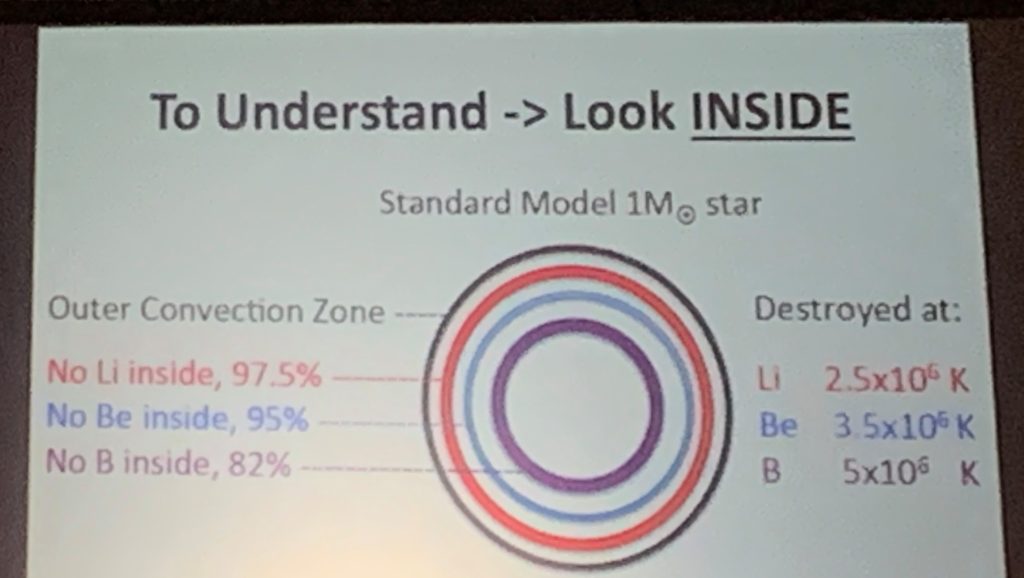
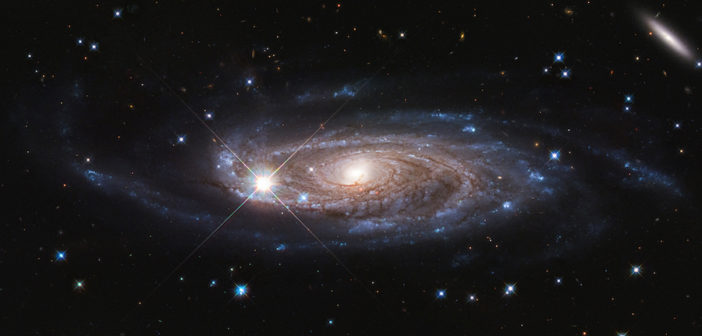
1 Comment
Pingback: Erkenntnisse von der 235. Tagung der AAS | Skyweek Zwei Punkt Null